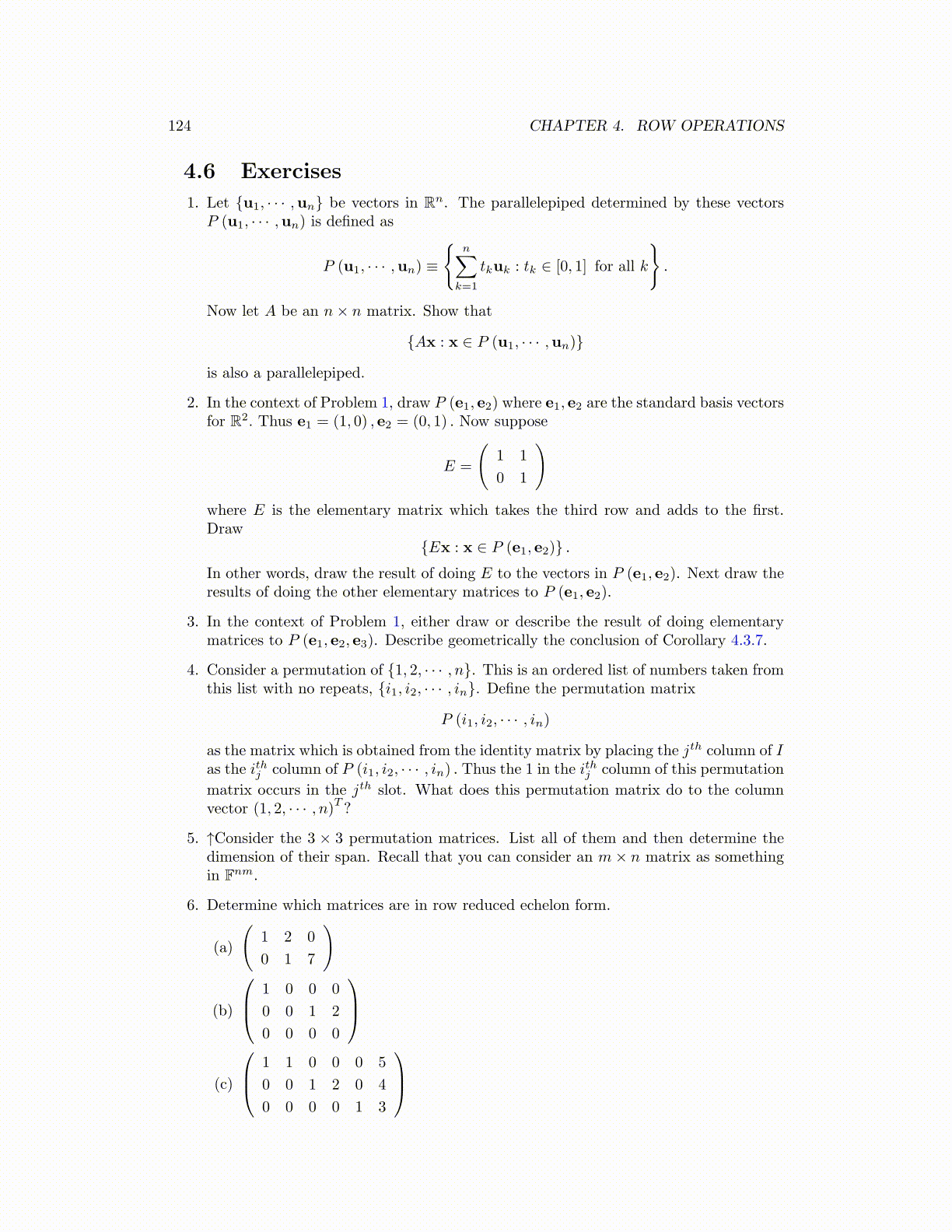
124 CHAPTER 4. ROW OPERATIONS
4.6 Exercises
1. Let {u1, · · · ,un} be vectors in Rn. The parallelepiped determined by these vectorsP (u1, · · · ,un) is defined as
P (u1, · · · ,un) ≡
{n∑
k=1
tkuk : tk ∈ [0, 1] for all k
}.
Now let A be an n× n matrix. Show that
{Ax : x ∈ P (u1, · · · ,un)}
is also a parallelepiped.
2. In the context of Problem 1, draw P (e1, e2) where e1, e2 are the standard basis vectorsfor R2. Thus e1 = (1, 0) , e2 = (0, 1) . Now suppose
E =
(1 1
0 1
)where E is the elementary matrix which takes the third row and adds to the first.Draw
{Ex : x ∈ P (e1, e2)} .In other words, draw the result of doing E to the vectors in P (e1, e2). Next draw theresults of doing the other elementary matrices to P (e1, e2).
3. In the context of Problem 1, either draw or describe the result of doing elementarymatrices to P (e1, e2, e3). Describe geometrically the conclusion of Corollary 4.3.7.
4. Consider a permutation of {1, 2, · · · , n}. This is an ordered list of numbers taken fromthis list with no repeats, {i1, i2, · · · , in}. Define the permutation matrix
P (i1, i2, · · · , in)
as the matrix which is obtained from the identity matrix by placing the jth column of Ias the ithj column of P (i1, i2, · · · , in) . Thus the 1 in the ithj column of this permutation
matrix occurs in the jth slot. What does this permutation matrix do to the columnvector (1, 2, · · · , n)T ?
5. ↑Consider the 3 × 3 permutation matrices. List all of them and then determine thedimension of their span. Recall that you can consider an m× n matrix as somethingin Fnm.
6. Determine which matrices are in row reduced echelon form.
(a)
(1 2 0
0 1 7
)
(b)
1 0 0 0
0 0 1 2
0 0 0 0
(c)
1 1 0 0 0 5
0 0 1 2 0 4
0 0 0 0 1 3